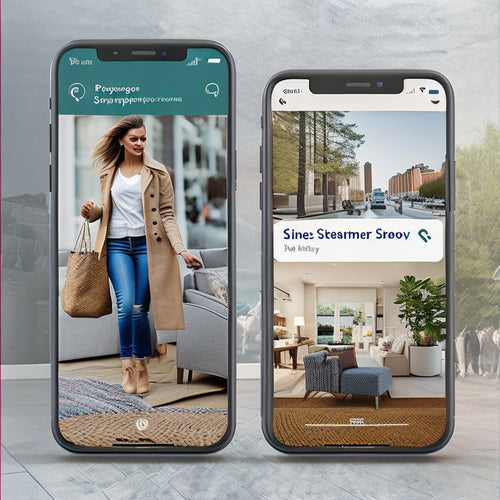
Newspaper Headline: Unveiling Crucial Ecommerce RFP Template Questions
Share
You're about to invest significant time and resources into selecting the perfect ecommerce platform, and crafting a well-structured RFP template is essential to securing the right vendor fit. To get it right, you'll need to pinpoint ecommerce platform requirements, prioritize them based on business needs, and craft questions that assess vendor capabilities and flexibility. You'll also want to evaluate communication strategy and explore pricing models and customization abilities. By asking the right questions, you'll be able to meticulously assess vendor capabilities and proposed solutions, and make informed decisions aligned with your business goals - stay ahead of the curve by uncovering the vital questions that make all the difference.
Key Takeaways
• Craft questions that pinpoint ecommerce platform requirements, prioritizing business needs and assessing vendor capabilities and flexibility.
• Include questions that evaluate communication strategy, pricing models, and customization abilities to ensure alignment with business objectives.
• Use a standardized RFP template to ensure fair vendor selection, clear communication, and thorough assessment of vendor capabilities.
• Prioritize business-critical aspects during evaluation, considering experience, technology, pricing, support, and vendor selection, negotiation, and contract terms.
• Adapt the RFP template to accommodate unique business needs, allowing flexibility in requirements and avoiding common RFP mistakes.
Understanding Ecommerce RFP Essentials
When crafting an ecommerce RFP, you must first understand the essentials, including the benefits and potential drawbacks of using a template, the typical RFP process timeline, and how to use an RFP effectively to find the best ecommerce platform for your business.
A well-structured RFP template helps you standardize evaluation criteria, set clear business objectives, and communicate specific expectations to vendors. This guarantees a fair vendor selection process, allowing you to discover new vendors that meet your ecommerce requirements.
Crafting Effective RFP Questions
To craft effective RFP questions, you'll need to pinpoint your ecommerce platform requirements and prioritize them based on your business needs, ensuring that vendors provide actionable insights and relevant information. This will help you make informed decisions during the vendor selection process.
Here are key considerations to keep in mind:
-
Vendor selection: Develop questions that assess a vendor's customization capabilities, scalability, and flexibility to meet your specific business needs.
-
Communication: Craft questions that evaluate a vendor's communication strategy, including their approach to issue resolution, regular updates, and transparent reporting.
-
Budgeting: Include questions that explore a vendor's pricing model, cost structure, and any additional fees associated with their ecommerce platform.
- Customization: Ask questions that investigate a vendor's ability to tailor their platform to your unique business requirements, including integrations and third-party APIs.
Evaluating Ecommerce Vendor Responses
Assessing ecommerce vendor responses demands a meticulous and structured approach to make certain you're comparing apples to apples and making an informed decision that aligns with your business goals. You need to evaluate their capabilities, experience, and proposed solutions to determine which vendor best fits your needs.
| Assessment Criteria | Weightage |
|---|---|
| Vendor experience and expertise | 30% |
| Proposed solution and technology | 25% |
| Contract terms and pricing | 20% |
| Customer support and services | 25% |
When assessing vendor responses, prioritize your business-critical aspects, and consider factors such as vendor selection, negotiation, contract terms, and pricing. By doing so, you'll be able to make a well-informed decision that meets your ecommerce needs and guarantees a successful partnership.
Avoiding Common RFP Mistakes
You've carefully assessed vendor responses, but now it's equally important to sidestep common pitfalls that can sabotage the entire RFP process. As you navigate the intricate world of ecommerce RFPs, it's essential to avoid mistakes that can jeopardize your project's success.
Here are some common RFP mistakes to watch out for:
-
Failing to establish clear vendor relationships: Make sure you understand the vendor's negotiation style and communication channels to avoid misunderstandings.
-
Overlooking vendor qualifications and experience: Verify vendors' credentials and experience to guarantee they can deliver on their promises.
-
Being too rigid with RFP requirements: Leave space for vendors to suggest innovative solutions that may not align with your initial expectations.
- Not allowing for flexibility in the RFP timeline: Be ready to adapt to changes and adjust your timeline accordingly to secure a smooth process.
Optimizing Ecommerce RFP Outcomes
As you finalize your ecommerce RFP, make sure that you're prepared for success by incorporating strategies that enhance the quality of vendor responses and ultimately drive better results.
To optimize your ecommerce RFP outcomes, focus on creating a well-structured evaluation process that assesses vendors based on your specific business needs. This includes developing a thorough ecommerce platform evaluation framework that covers key aspects such as site design, security, and APIs.
During the vendor selection process, make sure that you're not only evaluating vendors' technical capabilities but also their dedication to meeting your business objectives. By doing so, you'll be able to make informed decisions that drive better results for your ecommerce project.
Frequently Asked Questions
How Do You Handle Ecommerce Platform Updates and Maintenance?
You prioritize platform security by implementing timely upgrades, ensuring PCI compliance, and monitoring performance to prevent downtime, while also optimizing site speed and functionality to guarantee a seamless customer experience.
What Is Your Approach to A/B Testing and Personalization?
You develop a structured A/B testing strategy, leveraging data-driven insights to inform personalization techniques, ensuring seamless implementation and continuous improvement, while prioritizing customer data security and minimizing potential disruptions.
Can You Provide Case Studies of Previous Ecommerce Integrations?
Like a master chef presenting a signature dish, you'll want to serve up case studies that showcase your ecommerce integrations' ability to boost customer engagement and stay ahead of market trends, highlighting tangible results and ROI.
How Do You Ensure Data Integrity and Backups?
You guarantee data integrity and backups by implementing robust data security measures, such as encryption, access controls, and regular backups, as well as a thorough disaster recovery plan to minimize data loss and downtime.
What Are Your Ecommerce Solutions' Scalability Limitations?
"You're basically asking if our ecommerce solution can handle your future growth spurt without imploding, right? Honestly, scalability challenges are real, but we've got a plan to tackle them, and we're excited to explore future growth opportunities with you!"
Related Posts
-

Boost Customer Loyalty With 3 Proven Strategies
You're about to reveal the secret to turning casual customers into loyal advocates. Three proven strategies can help ...
-

Interactive Shopify Live Stream Shopping Apps for Enhanced Customer Experience
This article explores the use of interactive Shopify live stream shopping apps to enhance the customer experience. T...
-

Maximizing Pinterest for Business Success
Pinterest has emerged as a valuable platform for businesses seeking to enhance their success. Boasting a substantial...


